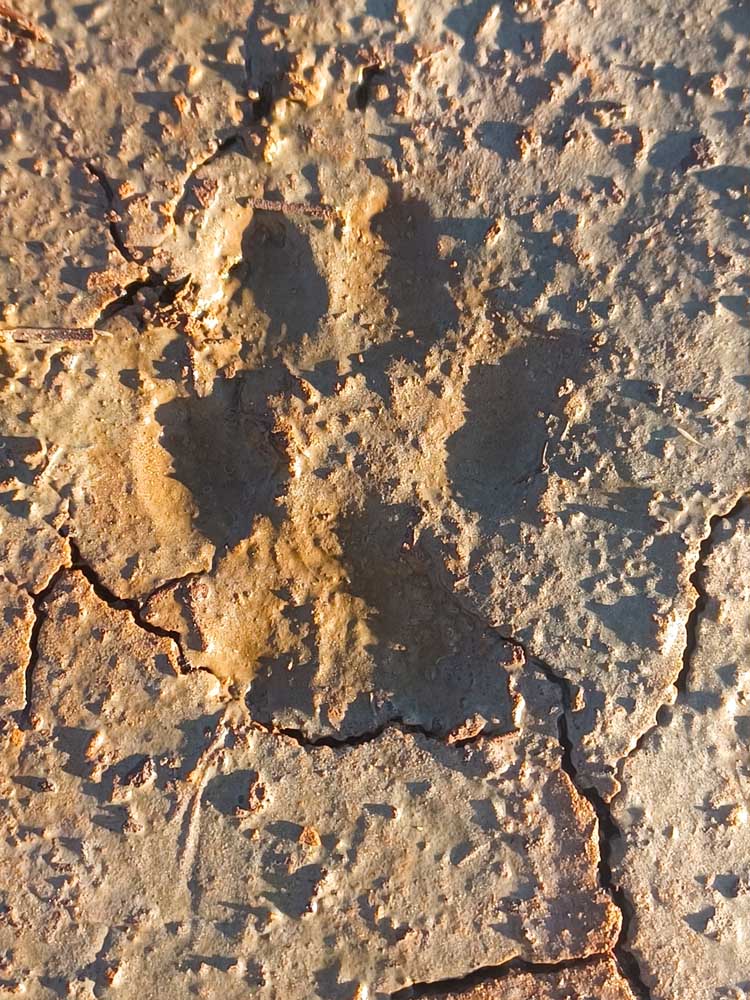Rainy Rambles: Clues of feathers and tracks
Published 9:00 am Tuesday, September 17, 2024

- A large track with two toes is a sign of elk.
The Columbia-Pacific region is fortunate to have an abundance of wild animals, from salamanders to squirrels, coyotes to crows, herons to herrings.
Because much of the area is rural, shyer species may be viewed now and then, and bolder ones will wander through developed areas — or even call them home. This makes it a great place for wildlife viewing.
But you won’t always get to see the animal itself.
Perhaps your paths crossed too late, or you posed too much of a threat for the critter to stick around. Keep your eyes peeled, and you may find evidence of the most elusive beings, and the most bold.
Bird feathers are among the easiest to find, especially in the fall.
The shape of a feather may help you determine what part of the bird it came from. Down feathers consist of a tiny bit of structureless fluff, while semiplumes and contour feathers have a stiffer central shaft.
Wing and tail feathers may look similar, but the former are wider on one side to facilitate flight. Tail feathers may be symmetrical, or at least closer to it than wing plumes.
The size also helps determine species. An 8-inch-long wing feather must come from a rather large bird, ruling out most.
A raptor, like a hawk or owl, is within the right size range, as are the smaller secondaries of a great blue heron.
It can be a little tougher to imagine what bird a fuzzy semiplume came from, but remember that these body feathers overlap quite tightly to help keep the bird warm and dry, and so half or more of the feather may be covered by its neighbors.
Color, too, is an important cue. A dark blue tail feather with black stripes will have come from none other than a Steller’s jay, while a dark brown feather with a bright red-orange shaft was molted by a northern flicker.
Of course, a white and gray gull feather on the beach could have come from any number of species, so it may take some study of the color patterns to figure out what you’ve found.
The U.S. Fish and Wildlife Service feather atlas is a great tool to help with feather identification.
Size is also important for identifying animal tracks. Think about the size of the feet of animals you’ve seen. An elk, for example, is about the size of a horse, and its hooves are comparably large. A rough-skinned newt, on the other hand, has delicate little feet less than a half-inch across. Trails of tiny little dots in the sand or soil were likely made by an insect or other arthropod. While tracks can be distorted to larger sizes by particularly wet ground, rain, or other erosion, a good fresh track will reflect the exact size of the foot that left it.
Similarly, consider the shape of animal feet you’ve observed and think of how they affect the shape of the tracks left behind. Bird tracks often consist of three long toes spreading forward from the heel, and sometimes a fourth trailing behind.
Webbed toes indicate birds adept at swimming, such as waterfowl and gulls. You’ll need to count the number of toes on a mammal’s track, whether that’s the two toes of a deer’s hoof, four toes of a coyote, or five toes of an otter, raccoon, or opossum.
There are plenty of books and other resources on more specific track identification, and should you ever get a chance to take a tracking class with local master racker Kristi Freese — like those at this weekend’s Wings Over Willapa festival at the Willapa National Wildlife Refuge — don’t miss out.
It can take practice to identify animals by what they leave behind, but with time you can gain valuable pieces of their stories, even in their absence.
Identify a found feather or study the patterns, colors and other characteristics of many North American birds with this image atlas from the U.S. Fish and Wildlife Service.
www.fws.gov/lab/featheratlas




